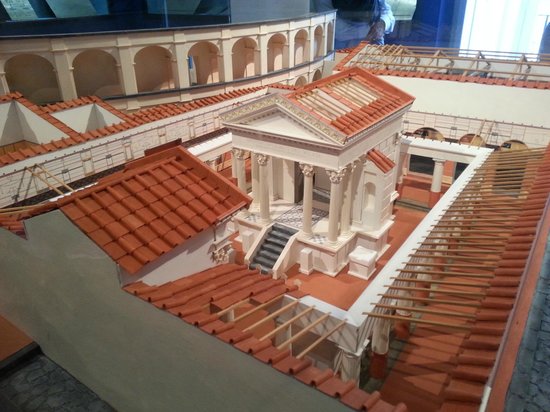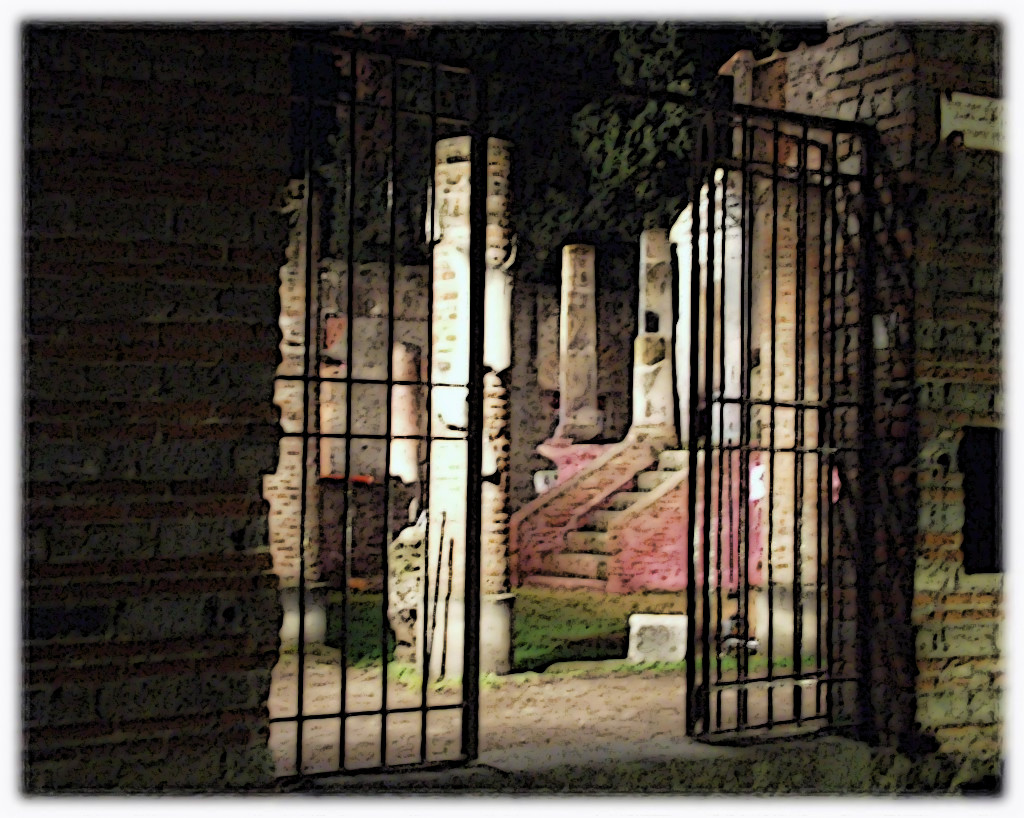Tempio di Iside (Temple of Isis)
In the Past

The Temple of Isis is a Roman temple dedicated to the Egyptian goddess Isis. This small and almost intact temple was among one of the first discoveries during the excavation of Pompeii in 1764. Its role as a Hellenized Egyptian temple in a Roman colony was fully confirmed with an inscription detailed by Francisco la Vega on July 20, 1765. Original paintings and sculptures can be seen at the Museo Archaeologico in Naples; the site itself remains on the Via del Tempio di Iside. In the aftermath of the temple's discovery many well-known artists and illustrators swarmed to the site.
The preserved Pompeian temple is actually the second structure; the original building built during the reign of Augustus was damaged in an earlier earthquake of 62 AD. Seventeen years later with the massive volcanic eruption, the Iseum alone was the sole temple to be completely re-built—ahead even of the Capitolium. Although the Iseum was wedged into a small and narrow space, it received significant foot traffic from theater-goers at the Large Theater, businessmen in the Triangular Forum, and others along the Stabian Gate.
Principal devotees of this temple are assumed to be women, freedmen, and slaves. Initiates of the Isis mystery cult worshipped a compassionate goddess who promised eventual salvation and a perpetual relationship throughout life and after death. The temple itself was reconstructed in honor of a 6 year-old boy by his freedman father, Numerius, to allow the child to enter elite society. Many scenes from the temple are re-created in the dining rooms of Pompeians, however, indicating that many individuals visited this temple for political, economic, or social reasons.
Worship of Isis

Isis is an Ancient Egyptian goddess, whose worship spread widely throughout the Greco-Roman world. She was worshiped as a patron of both motherhood and marriage, as well as mysticism and magical practise. She was the friend of slaves, sinners, artisans, and the downtrodden, who also listened to the prayers of the wealthy, maidens, aristocrats and rulers. Devotion to Isis was also intimately coupled with the acquisition of knowledge, considered an endowment of the gods. In contrast to most other clerics of the Graeco-Roman world, priests of Isis typically shaved their heads and wore linen garments, as per Egyptian tradition, rather than the more typical wool. Her cult did not include a messianic worldview, but did provide a relationship with the divine that was not severed with death. In common with most other deities of antiquity, Isis did not demand exclusive worship, though in practice her devotees applied (from a modern perspective) a somewhat henotheistic outlook. The cult of Isis is thought to have arrived in Pompeii around 100 BCE; following the destruction of the first temple in the earthquake of 62 ACE, Numerius paid for its reconstruction in honour of his son. Daily services were held, with a solemn morning opening, and a nightly closing ritual that featured musical accompaniment.[5] Ritual regalia associated with the cult included the sistrum, and a situla holding Nilotic water; both items were used in worship, and regularly appear in the archaeological record as symbols of Isis.
Artwork

Egyptian features of this temple include: purgatorium, extensive mythological scenes in the Ekklesiasterion, and Egyptian signs within the sacraium. The purgatorium is a roofless enclosure in the southeast corner of the courtyard that demarcates a subterranean room with a basin for Nile waters. Furthermore, statues of Isis are assumed to line the front with Roman deities along the long walls. The purgatorium itself resembles a miniature temple with pediments and pilasters at the entrance coated with stucco.
The Ekklesiasterion includes scenes of Io's arrival in Egypt and subsequent reception by Isis. The north wall includes scenes with Io (mythology), Argos, and Hermes. This room itself appears to be the most formal with its role in ritual banquets as well as the reunion of initiates. The sacraium is even more Egyptian with a mural of snakes guarding a wicker basket adorned with lunar symbols. This may represent a spring sailing season celebration, navigium Isidis, since Isis restores her husband-brother to life by towing a boat filled with sacred waters. Mozart visit
The famous composer Wolfgang Amadeus Mozart is known to have visited the Temple of Isis at Pompeii in 1769, just a few years after it was unearthed and when Mozart was himself just 13 years old. His visit and the memories of the site are considered to have inspired him 20 years later in his composition of The Magic Flute.
